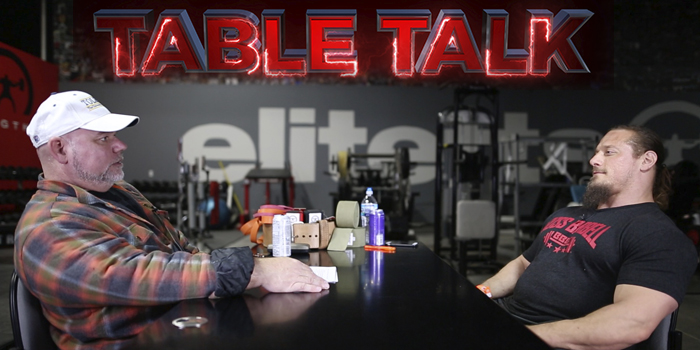
Every record-breaking powerlifter knows that their time at the top of the sport is limited. Whether by age, training age, or injury, this sport requires things of you that the human body can only give for so long. While one of the greatest things of powerlifting is that you can choose to compete for your entire life, until the day you die, the fact remains that being a top-ranked lifter is not easily achievable and is rarely maintainable a long period of time. For today's Table Talk, Dan Green responds to a question about his own "peak" in the sport of powerlifting, and how that may be affected by his most recent injury and surgery:
"With your past injury and age, do you think you have peaked with your lifting career or do you think that you can retake some of the world records?"
Dan begins his answer by pointing out that his most recent injury certainly isn't his first; it's just the first time that he's had surgery to repair an injury. What he has learned over time through injuries is that when you change your training protocol, you learn a lot of new things about training and how to better prepare for it. The approach he is currently using is geared toward lifting more weight and breaking more records, but it's also more intelligent than it has ever been in regard to health and how his body feels. He says that one of his favorite things about training is the challenge of learning how to train around obstacles like injuries.
Several adjustments he has made recently in response to these challenges include more heavy back training and more focus on his conventional deadlift. Because he has always been stronger with a sumo stance, it has received more attention in training and henceforth been used in competition. The increased focus on conventional stance deadlifting over the last year, however, has brought his strength in that stance up to the point that it will soon surpass his sumo deadlift stance strength. With these types of changes and his continuing goals in powerlifting, he says that it'll take a lot more injuries before he's not looking at lifting more weight.
WATCH: Table Talk with Dan Green — Training Frequency of the Powerlifting Movements
Dave points out that, with most lifters he has known, as soon as an injury occurs, the immediate question they ask is, "How long is this going to take to come back from?" When you stop asking that question is when you know it's about time to quit. Dan's first powerlifting competition was in 2007 and he has done roughly 25 competitions in that timespan. With this many meets under his belt, his mindset when approaching meets has somewhat changed from number-focused to quality-focused. In the last year, he has done several bench-only meets due to his knee still bothering him, which he describes as a "luxurious" way to compete because of only having to do one lift at the meet. As he transitions back into full power meets after a year of bench-only, though, he hasn't put too much pressure on himself. Despite training as hard as he possibly can, he doesn't have an arbitrary number in his head that he wants to hit. Instead, it's all about training with good quality of training every week, pushing it when he feels good and pulling back when he doesn't.









